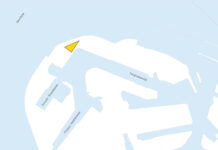A group of research institutes and leading industry bodies are collaborating on a project that will drive green ammonia as a marine fuel, with the intention of developing a safe and available zero-carbon fuel in time to meet the industry’s carbon objectives.
Managed by the Mærsk Mc-Kinney Møller Center for Zero Carbon Shipping and funded by all seven partners, Mitsubishi Heavy Industries, the Lloyd’s Register Decarbonization Hub, AP Moller-Maersk, MAN Energy Solutions, NYK Line and Total, the project is expected to run throughout 2021.
[s2If is_user_logged_in()]In a statement the companies said, “Achieving the long-term target of decarbonization requires new fuel types and a systemic change within the industry. Shipping is a globally regulated industry, which provides an opportunity to secure broad-based industry adoption of new technology and fuels.”
In an effort to expedite the development of new viable technologies a co-ordinated research effort across the entire supply chain is necessary, added the companies taking part in the research programme.
However, the companies also warned, “Industry leaders play a critical role in ensuring that laboratory research is successfully matured to scalable solutions matching the needs of industry. At the same time, new legislation will be required to enable the transition towards decarbonisation.”
Green ammonia can be produced through electrolysis of water, using renewable energy sources, but it is the toxicity of the fuel that could present the greatest challenge to its use as a marine fuel.
Recognising this drawback the group stated that “it is critical to address the safety issues of ammonia in order to mitigate risks for both people, assets and the environment.”
As a result, the use of ammonia as fuel will require a clear risk assessment of the safe use of the fuel will be developed in phase one of the project, and once that is understood global standards for the storage and use must be developed.
Included in the risk assessment will be the “risk of fatality from unintended releases of ammonia, as well as the risk contribution of key equipment and spaces dedicated to ammonia storage.”
Commenting on the project Claus Winter Graugaard, head of onboard vessel solutions, at the Mærsk Mc-Kinney Møller Center for Zero Carbon Shipping, said, “In the eagerness to decarbonise the shipping sector, proper risk management is critical, and safety must not become an afterthought. This project will provide matured understanding of safety risk enabling industry guidance towards future safeguard design and adequate operational guidelines. Enabling safe and adequate deployment of ammonia as marine fuel.”
[/s2If]
[s2If !is_user_logged_in()]Please login or register to read the rest of the story[/s2If]





